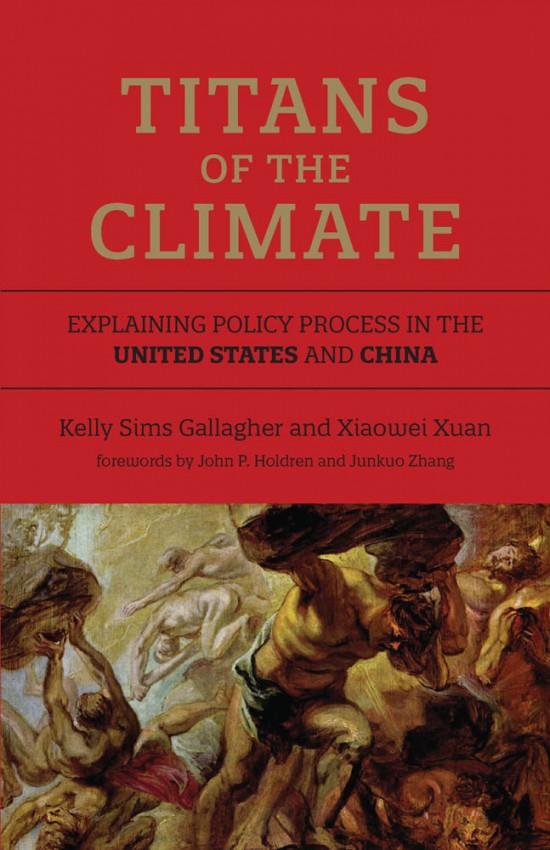Titans of the Climate: Explaining Policy Processes in the United States and China
Reviewed by Jessica Gordon, University of California, Berkeley
What climate policymaking processes do the United States and China follow? How do their policies differ? Can the two “Titans” achieve shared momentum in their efforts to reduce greenhouse gas emissions?
Titans of the Climate: Explaining Policy Processes in the United States and China, by Kelly Sims Gallagher and Xiaowei Xuan, MIT Press, 2018, 272 pp.
The United States and China are “Titans of the Climate” as the largest greenhouse gas emitters on the planet and therefore key to addressing climate change. Kelly Sims Gallagher and Xiaowei Xuan, two scholar practitioners who have been closely involved in climate policymaking in their respective countries, provide a clear picture of the climate policymaking process. This is no small feat given the complexities on both sides and their inherent challenges of drawing comparisons between two different political systems.
After providing the overall context for the two countries, the core of the book focuses on the detailed history of the development and implementation of national climate targets and an analysis of the varied policy outcomes. To explain policy differences in the two countries, the authors provide seven key factors: party politics, separation of powers, government hierarchy, and bureaucratic authority, economic structure and strategic industries, individual leadership and the media. This leads the authors to consider that the American process as “deliberative incrementalism” characterized by fragmentation, instability and unpredictability while China practices “strategic pragmatism” with stable and comprehensive climate policymaking.
Although the landscape has changed between the US and China since its writing (during the first year of the Trump Administration), this book is as pertinent as ever as the US has released an updated and more ambitious NDC and China has a carbon neutrality pledge. The authors’ goal is clear–to increase understanding on both sides in order to foster trust and collaboration–and they achieve it well. Given the new positive statements between the US and China on working on climate change, this book reminds us how and why the two nations should build on their momentum together. It is a great primer on US and China policymaking for anyone interested in the topic and would be a good addition to any class on climate policy or US-China relations.


